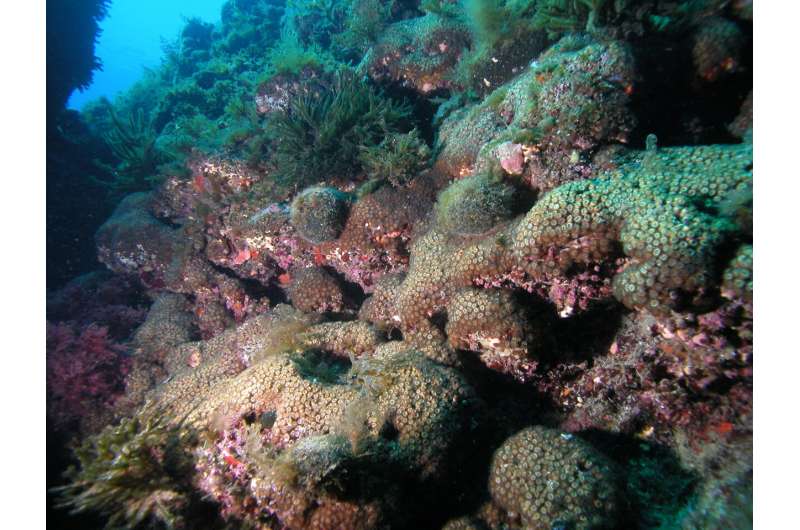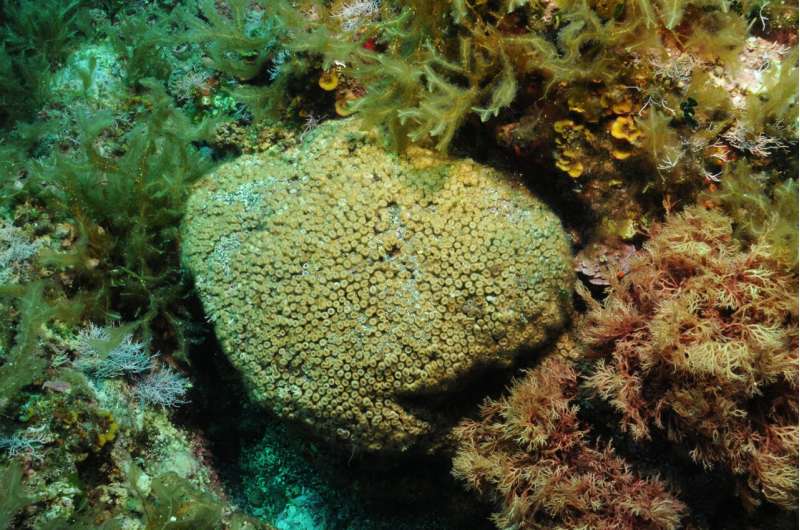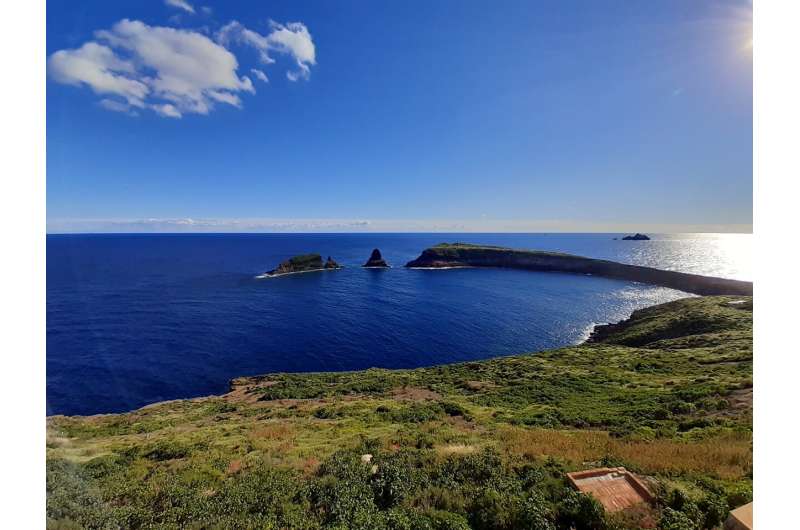This article has been reviewed according to Science X's editorial process and policies. Editors have highlighted the following attributes while ensuring the content's credibility:
fact-checked
peer-reviewed publication
trusted source
proofread
Industrial pollutants found in Mediterranean corals for the first time

Pollutants from burning fossil fuels have been found embedded in corals, for the first time, offering scientists a potential new tool to track the history of pollution, finds a new study led by UCL researchers.
The study, published in the journal Science of the Total Environment, identified carbon particles emitted by burning fossil fuels embedded in the corals of Illa Grossa Bay, off the Columbretes Islands in the Mediterranean Sea. Finding this type of pollution—known as fly-ash or spheroidal carbonaceous particles (SCPs)—contaminating natural deposits is seen as an indicator of the presence of human influence on the environment, and an historical marker of the beginning of the proposed Anthropocene epoch.
Corals are a commonly used natural archive for paleoclimate studies because of their measurable growth rates. Akin to tree rings, their long life and slow and regular growth can provide scientists with annual, monthly or even weekly, environmental data going back years.
Up to now, they've largely been used to gauge past climatic conditions like water temperatures and chemistries, but this is the first time that pollutant particles—other than microplastics—have been recovered from corals.
Lead author, Dr. Lucy Roberts (UCL Geography), said, "The discovery of these pollutants embedded in coral skeletons extend over decades and paint a clear picture of how extensive human influence is on the environment. It's the first time we've been able to see this kind of contaminant in corals, and its appearance in these deposits parallels the historic rate of fossil fuel combustion in the region."

Corals, which are small invertebrates that tend to dwell in expansive colonies, ingest the SCP pollutants from the surrounding waters, incorporating them as they grow their calcium carbonate skeletons.
Researchers at Instituto de Acuicultura de Torre de la Sal (IATS-CSIC) collected coral samples from several sites along a reef off the coast of Castelló, Spain. The coral species, Cladocora caespitosa, has been studied and monitored there for two decades and the location is considered a global change sentinel site.
The corals are located nearly 60 kilometers away from shore, and within a protected marine reserve, minimizing the likelihood of local contamination. The species is the only Mediterranean coral with the capacity to form large reefs, and are known to grow at an average of about 0.3 centimeters per year.
Once in the lab at UCL, the corals were dissolved in acid, leaving behind any pollutant particulates embedded in the skeleton. The team first counted all SCPs in the remains under a microscope. The samples were then viewed under an electron microscope and analyzed with X-rays to look for the chemical signatures of SCP contamination indicative of coal or oil power plants.
The team found the corals showed a significant increase in SCP contamination between about 1969 and 1992. This corresponds to a time when Europe was industrializing quickly, and coal consumption in the country increased dramatically.

These results align with other measurements of SCP contamination taken from mountain lakes in Spain, which supports the idea that corals can serve as natural archives to gauge changing levels of pollution over the years.
These findings come at a time when scientists are looking for tools to mark the beginning of the Anthropocene epoch, a unit of geological time, used to describe the most recent age in Earth's history where human activity became the dominant influence on the planet's climate and environment.
A number of scientists have advocated using the presence of SCPs as marker for the beginning of the Anthropocene, and their discovery in coral skeletons lend support to this argument. Already they've been identified in lake and marine sediments, ice cores, and peat beds.
Dr. Roberts said, "As it becomes clearer that humans have altered the natural environment to an unprecedented level, these pollutants act as indelible markers, indicating the start of the Anthropocene epoch. This is valuable to researchers trying to better understand the history of human impact on the natural world and serves as a powerful reminder of how extensive human influence is over the environment."
This research was led by UCL, in collaboration with the Instituto de Acuicultura de Torre de la Sal, Spain and the University of Leicester.
More information: L.R. Roberts et al, First recorded presence of anthropogenic fly-ash particles in coral skeletons, Science of The Total Environment (2024). DOI: 10.1016/j.scitotenv.2024.170665
Journal information: Science of the Total Environment
Provided by University College London




















